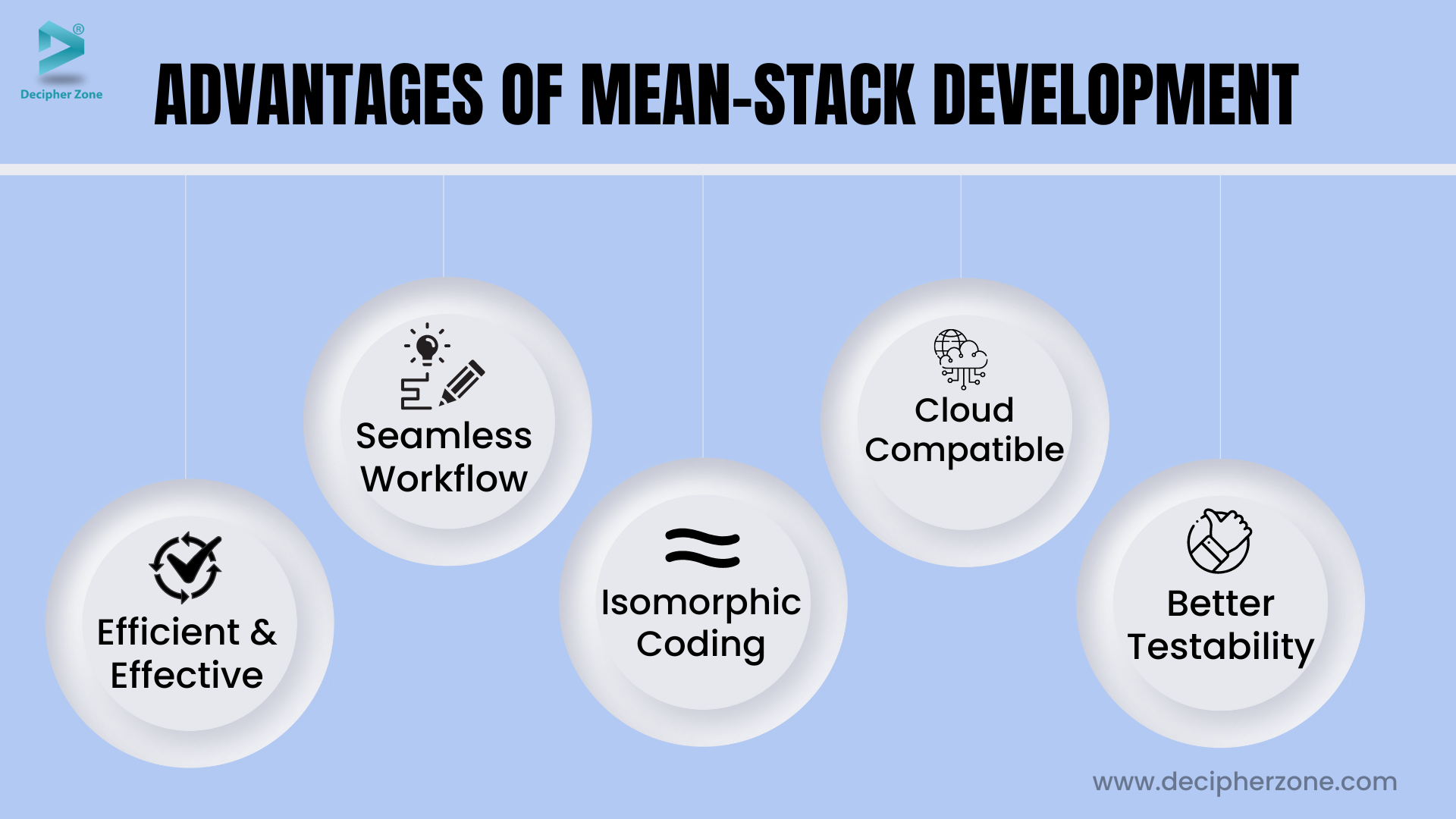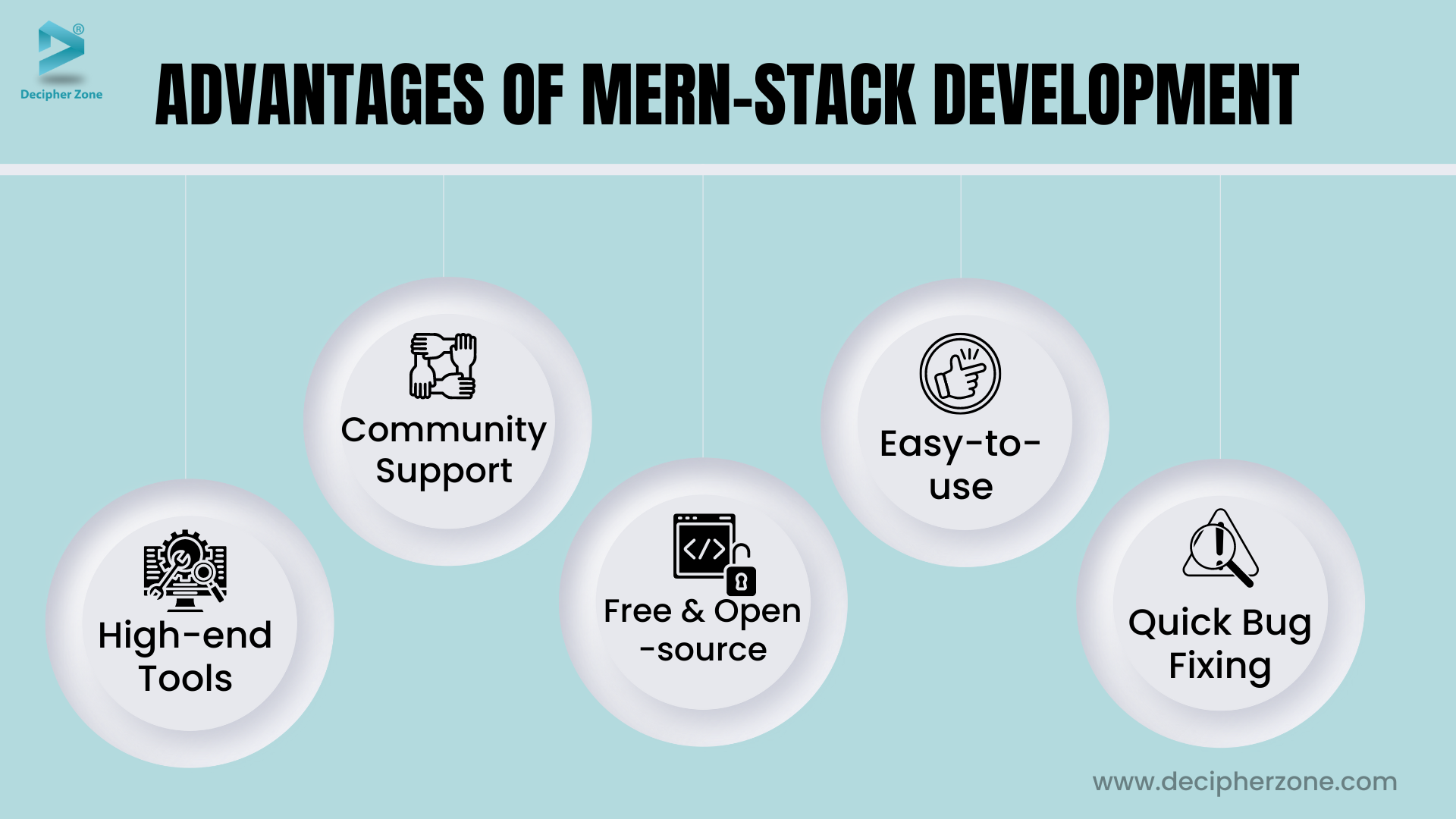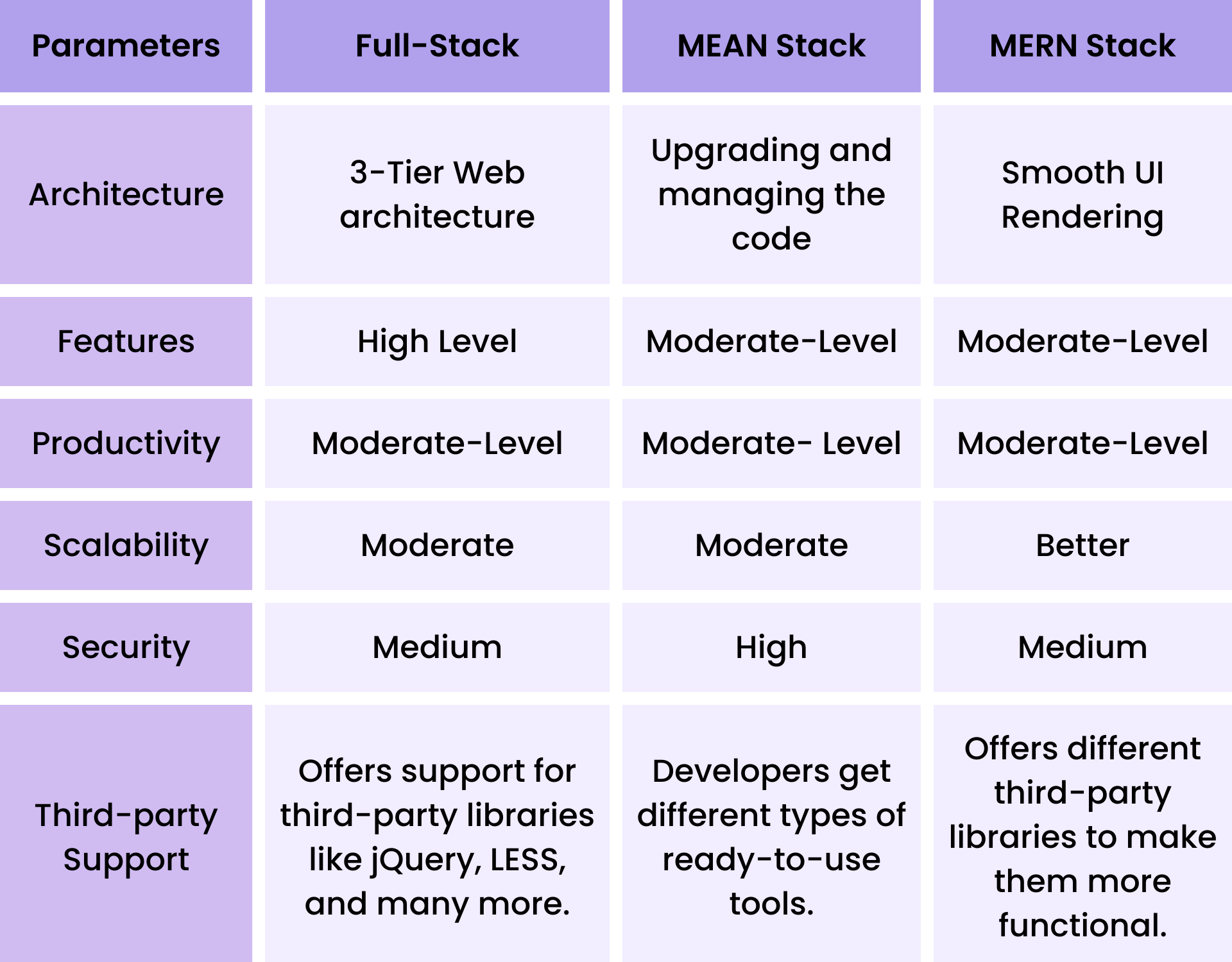Full-Stack vs MEAN vs MERN - What to Choose? Software development has been changing continuously and has brought new advancements to ease the development process as well as boost the career of the developers and ease their work.
When developing an application or software you must choose the right technology stack that meets your business requirements and offers robust infrastructure, flexibility, versatility, scalability, and performance.
And to develop top-notch software, the business as well as the developers should be well-versed with the stacks along with their advantages and disadvantages.
This blog will help you understand different technology stacks i.e. full-stack, MEAN Stack, and MERN Stack, and a head-to-toe comparison of all these stacks.
Full-Stack vs MEAN vs MERN - Introduction
Full-Stack vs MEAN vs MERN, are different yet similar tech stacks that help in developing software that is high-performing, scalable, flexible, secure, and cost-efficient. Before defining all these different stacks let us first help you understand what a technology stack is.
It is a set of technologies that includes programming languages, frameworks, libraries, tools, APIs, and databases to help develop and streamline the software development process.
Full-Stack
It is the traditional approach to web app development that enables the development of the front-end, back-end, and database of an application using one programming language. It comprises every aspect of development starting from the software design, coding, testing, and deployment.
Read: What Does A Full Stack Developer Do
CSS, Bootstrap, Backbone.js, React, Angular.js, and JavaScript are some of the front-end technologies used in full-stack development. Whereas, PHP, Java, Python, Django, and Node.js are examples of back-end technologies.
MEAN Stack
It is an open-source tech stack with a collection of full-stack JavaScript-based technologies that helps develop dynamic websites and web applications. It is a modern approach to web app development that helps in developing applications and software for businesses of every level.
In the MEAN stack architecture, M is for MongoDB, E is for Express.js, A is for Angular, and N is for Node.js, which are the base technologies of this particular stack.
The primary functions of these technologies are -
-
MongoDB is a database program that helps in storing and retrieving data.
-
Express.js is a back-end framework that makes requests to the database and returns with a response.
-
Angular is a front-end framework that accepts the requests made and displays the results.
-
Node.js is a server environment that helps handle client and server requests.
MERN Stack
It is an updated version of the MEAN stack and is a collection of JavaScript frameworks. It is easy to use and helps in the easy and quick development and deployment of full-stack web applications. This technology stack includes MongoDB, Express.js, ReactJS, and Node.js.
Read: What is MERN Stack & How Does It Works
Furthermore, it also helps in developing dynamic applications and websites with ease and enables better flexibility while developing software.
Full-Stack vs MEAN vs MERN

Pros and Cons of Full-Stack
The advantages of full-stack development are as follows -
-
It allows the developers the flexibility to switch between the front-end and back-end of a project simultaneously, whenever needed.
-
Cost is a primary advantage when hiring full-stack developers, as a full-stack developer is capable of working on both the front-end and back-end of applications, making it a cost-effective solution and also helping in saving a lot of time.
-
Since the developers are well-versed in the placements of the code, it makes it easier for them to update and maintain the software.
-
Opting for hiring full-stack developers also enhances the quality of the software boosting the productivity of the developers and streamlining the workflow.
-
It also makes the troubleshooting process easier for the developers as they already know the location of the code, which again is both time and cost-efficient.

There are not many disadvantages of full-stack development, but still, there are a few, and they are -
-
It requires a lot of knowledge and experience to be a full-stack developer and requires constant upgradation of the technologies to stay ahead of the competition.
-
It can slow down the development process sometimes as the developers will be overloaded with a lot of work since they handle every aspect of the software development process starting from design till the deployment.
Pros and Cons of MEAN Stack

The pros of MEAN stack development are -
-
It enables greater efficiency and cost-effectiveness as it requires fewer numbers of developers while developing projects using this specific tech stack.
-
It facilitates the MVC (Model View Controller) architecture which in turn facilitates a seamless and organized development process.
-
Developing software with MEAN stack also helps in isomorphic coding which allows developers to transfer the code to other frameworks accelerating the transcendence of the development projects.
-
It is open source and is also compatible with the cloud which helps in the deployment of the cloud functionalities with MongoDB, thus reducing the disk space cost.
-
In addition, it also supports better testability as Node.js and Angular are two powerful frameworks that have powerful directives along with high speed.
The disadvantages of the MEAN stack are as follows -
-
There is a possibility of losing records due to network partitioning or heavy load.
-
It is not a feasible option when it comes to developing applications for large-scale businesses.
-
Security might be an important issue since it is a young stack that might attract hackers and cyberattacks.
Pros and Cons of MERN Stack

The pros of MERN stack development are -
-
It has a wide range of high-end tools and libraries that makes the development process smooth and hassle-free.
-
It has strong community support with developers and experts from around the world.
-
The technologies in the MERN stack are free and open-source and it also supports the MVC (Model View Controller) architecture.
-
It is easy to use and well-documented which helps in the development and deployment process much easier.
-
Furthermore, it is easy to learn and also facilitates easy code maintenance and quick bug fixing effectively, thus enhancing the quality of the software.
The cons of the MERN stack are -
-
It is not as popular as compared to the other tech stacks and frameworks.
-
It impacts the productivity of the developers and is not feasible to develop large-scale applications.
Comparing - Full-Stack vs MEAN vs MERN

Comparing Full-stack vs MEAN vs MERN stack, All these stacks have their specific pros and cons but here are a few parameters that will help you with the decision-making that which tech stack is better for developing software for your business.
Wrapping It Up
Software development requires a lot of research and planning to deliver the best possible solutions for a business. And more importantly, choosing an appropriate technology stack that meets all your business needs is an important aspect of the software development lifecycle.
That being said, the debate of the comparison between Full-stack vs MEAN vs MERN stacks is very difficult.
So, if you want to develop an application or software you can surely consider choosing from the aforementioned tech stacks and deliver quality services to your customers across the world.

FAQs: Full-Stack vs MEAN vs MERN
What are the companies that use MEAN tech stack for software development?
Some of the companies that use MEAN tech stack for developing their software are Uber, Trello, Netflix, LinkedIn, and many more.
What are the famous companies that use the MERN stack?
Facebook, Airbnb, and YouTube are examples of some of the famous industry giants that use the MERN stack in their applications.
Which tech stack is better MEAN or MERN stack?
Considering the pros and cons of the MEAN and MERN stacks both are equally capable but one primary difference between them is that the MEAN stack is better for large-scale applications, whereas MERN stacks help in developing smaller applications quickly.

